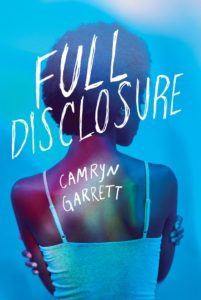I recently saw a review of a book I love that claimed the reader had been promised lesbians and got none, and it made me angry. After all, right in the novel, there was a queer protagonist who thinks women are hot and jokes often about her sexuality. There was a side character who flirted with her and they both liked it. Another female character admitted to a crush on another woman. There was an enemies-to-lovers-esque sapphic plot line that could have been read as quite romantic. No, no one kissed. No one had sex. But they were all still queer. This critique touched a nerve with me because I’m a pansexual woman who didn’t figure out my identity for years because I don’t have much romantic or sexual experience, and so I thought it wasn’t fair to claim queerness if I hadn’t somehow “proven it” or had “enough” queer experiences. Despite having told a friend in 8th grade that I “thought I might be a lesbian,” despite three out of five of my celebrity crush list being women, despite fighting bi erasure within my own friend group, until I was 23 I would tell people, “I’m basically straight.” The problem? I was not straight. I just thought it was the real answer, the legitimate answer. I was actually super pansexual, the whole time.
A post shared by Leah Rachel von Essen (@whilereadingandwalking) on Jun 30, 2019 at 9:22am PDT Erasure of queer identities is so real. I’ve been dating a man for six years now, and the sheer number of people who have assumed I’m heterosexual as a result can be frustrating. When I came out as pansexual, one adult in my life asked what that would change about my relationship (um, nothing). Too many people think of me as “essentially straight.” It’s frustrating and hurtful and makes me feel as though I don’t belong, and it’s just that attitude that made me sit back for so many years. I could have really used young adult books when I was young, or when I was a teenager, or even now, that deal with queerness without needing to have a romantic relationship or a kiss or sex to make it “real.” It’s one of the biggest reasons I loved Full Disclosure, a fantastic YA contemporary by Camryn Garrett about a teen girl with HIV. She has two queer friends, but even though she had a strong crush on a female friend at her old high school, she wonders if she can actually tell them that she’s bisexual or pansexual, if she can claim that label when “technically she doesn’t know.” But over the course of the novel, she realizes she does know, and can own it. That it’s enough to know where your attraction lies without needing to prove it.
Teens need to see that queerness exists as its own entity within your identity, not solely in a sexual or romantic history. This is also important for middle grade and younger readers—to allow, for example, for a story about a 2nd grade girl who has a crush on another girl in her class, or who tells her parents she thinks she likes girls more than boys. It’s important for non-cisgender young people who are told they can’t “know for sure” until they’re more grown up, as if puberty determines your identity or your queerness. And it can also help clear the way for readers on the asexuality spectrum, who are constantly challenged by prejudiced people who are insistent they “just haven’t found the right person yet”—who are haunted by their inability to “prove” their identity. They don’t have to prove a thing. None of us do. Books can help show that by allowing characters to be queer and then telling readers to just believe they are—no evidence needed. If I’d had books like these when I was 12, maybe I would have known about bisexuality and pansexuality. Maybe I wouldn’t have wasted as much time in high school pretending to have crushes on guys I didn’t like when I was actually crushing on women in my class. Maybe I would have come out a lot sooner.
